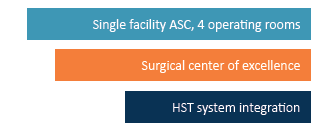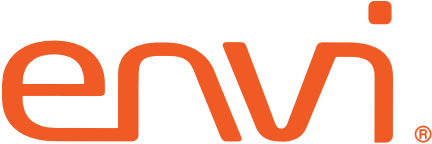
Owned by Boulder Community Health and Foothills Surgery Group, LLC, Foothills Surgery Center is a surgical center of excellence providing surgical services across multiple specialties. Foothills Surgery Center consistently drives the highest patient satisfaction ratings and is a proud member of the Colorado Ambulatory Surgery Center Association.
By leveraging Envi capabilities, the team at Foothills initially replaced manual inventory management processes and improved the identification and structure of their physical inventory, then went on to increase process automation, ordering accuracy, data visibility and capture, back order management and increase supply chain resiliency.
THE FOOTHILLS SURGERY CENTER STORY
Replacing Manual Processes with an Automated Solution
Foothills Surgery Center was managing supplies manually; materials management team members walked through the center to find supplies and identify inventory levels, writing down item codes and numbers of items on-hand. Stock and inventory areas were not well-labelled and items were often stored in various locations. Supplies weren’t always in bins and when items were out, it was difficult to identify what was missing.
With a hand-written list, the materials team would move to the patient accounting system and enter codes one by one. If information was missing, they’d return to the storage location and find the detail needed to fix errors. Once created, orders were printed and faxed, or a second keying process took place on a vendor’s e-commerce site.
“We needed to find better ways to improve accuracy and free up time,” said Loren Anderson, CMRP, Materials Manager. “We didn’t have a materials management system before Envi and our processes were slow and manual. We had no way to validate the accuracy of items and orders.”
Anderson and his team set goals to make their supply chain processes more accurate, including ensuring that all items in inventory were stored and labelled correctly, with correct item codes, descriptions and par levels. “In a smaller facility, space is at a premium. We created a specific location for every item, then worked to right size all the bins, and label everything with barcode labels and min/max levels.”
Implementing Envi, Building Excellence
“As we considered a solution to support our supply chain efforts, we identified Envi based on both solution functionality and business relationships,” said Anderson. “First, as a member of Provista, we liked the opportunity to closely link supply chain processes with GPO services and contracts, and second, we wanted to use a solution that integrated with our HST system, especially to help with case costing.”
Anderson discussed specifics about how Foothills identified new processes to drive excellence throughout their supply chain. “We started with the physical aspects of supplies and made sure everything was organized and labelled, then moved into data. We cleansed and normalized data to make sure product descriptions in our Envi item master were correct, then added classification codes so we could track and understand spend. We uploaded contract data, first so we could confirm accurate pricing by comparing our purchase orders (POs) to supplier PO Acknowledgements, and second, to be sure we could manage contract expiration dates so we didn’t inadvertently buy off-contract.”
“Today we use barcode scanning to instantly identify items for reordering. Barcode labels on product shelves let us instantly scan and enter quantities to be purchased, and with vendor codes, we can eliminate issues with the order or contract price. We’ve built lead times for every vendor. In Envi, we entered vendor lead times, as well as our min/max supply levels, and when combined, we can better understand on-hand supply capacity, pending orders and stock-out risks. We’re alerted of overdue inventory and can quickly follow-up on backorders. With recent supply chain disruptions, this has been essential to helping ensure clinicians never run out of supplies.”

Envi Best Practices Drive Results
2020 has undoubtedly pressure tested the healthcare supply chain. Organizations have been challenged to maintain on-hand stock for even common items. “It’s become clear that visibility to all available inventory, wherever it may be located, and understanding lead times and back orders, is vitally important to overall supply chain health,” said Anderson.
The team at Foothills has leveraged the powerful Envi reporting tools for data analysis. “Envi data illuminates areas of potential improvement with information such as categorical spend, spend by vendor, and rep-delivered versus stock spend,” said Anderson. “By identifying products with a classification hierarchy, we’re able to see where our money goes, and if we have categories where spend isn’t proportional to revenue, we identify red flags.”
Best Practice Highlights
- Process 100% of orders through Envi for complete spend visibility
- Complete data capture to improve intelligence-based planning and decision making
- Identify price discrepancies on the front end using correct contract price
- Set-up Envi alerts to identify overdue orders
- Leverage weekly back order report to follow up on overdue items
- Receive incoming supplies, matching POs to receiving and back order reports
- Implement processes to protect and maintain data accuracy
Foothills is recognizing improvements in labor through time savings and direct savings from on-contract purchasing. Anderson added, “The most important change for us has been having a real materials management system. Smaller facilities might think they don’t need MMIS functionality, but it’s important to our supply chain processes, and leveraging the full functionality is key. I know there will always be more ways to leverage both the system and data.”
